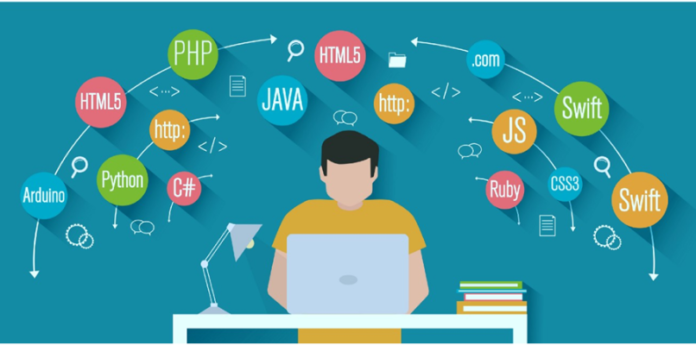Most current languages are not designed for play or showing off human programming skills. Individuals are produced in reaction to a widespread problem that their makers are keen to address. Whereas most programmers may begin to publish their daily code inside one or even more traditional, outdated languages, we’re constantly searching for innovative solutions to aid our programming attempts. This approach is particularly evident in developing domain-specific systems, or DSLs. These would be condensed, narrowly defined languages. They are still not made to be used generally. However, for that cause, some might be given a particular position in your toolset.
Emerging procedural coding like Go and Rust is increasing in popularity due to the development of microprocessors, circuit panels, and the demand for improved output. You can constantly discover something helpful in this field because it changes quickly. How do you decide until you follow language, though? What else to understand further is a common issue that programmers frequently encounter?
The primary factor is your skills, hobbies, and professional goal. The technology sector is dominated by a few well-known languages such As python or JavaScript. Afterward, Different JAVA Compilers are also launched to help programmers. These emerging procedural programs have established themselves. A few are DSLs, which perform particular functions very well. Some people appear to want to preserve the planet. Even when they’re not precisely what you want right now, each seems to have something to teach us regarding coding our computers to do what they do.
1. Kotlin
Kotlin is intended to be an advanced manufacturing entity language of coding that is superior to Java and utterly compatible with Java programs, allowing customers to change between Java to Kotlin progressively. Kotlin is indeed a domain-specific technology for contemporary cross-platform apps. It was created by a JetBrains group and debuted in 2011.
Kotlin allows coding language by using procedures, including the techniques or structures of the entity methodology. Additionally, it enables Type functionality and text substitution in the Linux and Perl terminal scripting methods.
2. Elm
Elm is a coding language created to develop user interfaces for internet applications. It shouldn’t produce real-time warnings, in contrast to JavaScript. Elm, on the other hand, takes advantage of type inferences to identify issues with compiling and offer helpful recommendations.
Efficiency, accessibility, and durability are the three main goals of programming. Let statements, unidentified methods, if phrases, instance speech patterns, or array extraction are just a few of the robust syntax structures it has.
3. Julia
Julia is a high-level programming language for quantitative research and statistical methods; arithmetic precision, a powerful translator, an extensive library of nonlinear formulas, and networked concurrent processing are all features of this language.
It offers free, accessible modules for matrix multiplication and text manipulation, including truly random formation. Because Julia programs are structured upon other dispatches, you may design functional behavior for various possible parameter forms.
4. Elixir
Elixir is created for building attractive, scalable solutions. It is a dynamic, operational program that uses the Erlang Virtual Machine, renowned for operating responsibility and limited networks. This language aims to increase Rails applications’ efficiencyin working on various CPUs.
The programming language in Elixir is translated into Erlang bytecode and executed on the BEAM Erlang Terminal Emulator. It is a fantastic choice to consider if you are focusing on information extraction, networking applications, or perhaps some form of the financial program. However, this won’t be simple for you if you’ve not worked with structured coding before.
5. Rust
Rust is the coding language for systems created by Mozilla. It won first place in the “One Of best Liked” section of Stack Overflow’s programmer surveys for 2016 and 2017. The Rust language and the Servo internet browser design algorithm have improved the software’s architecture. It has simple terminology and therefore is relatively close to C language.
Rust is intended to become a secure, simultaneous, and helpful language of programming that supports both operational and demanding processing techniques. To improve storage protection, avoid fragmentation and preserve efficiency, this is not for creating programs for end customers but rather for equipment.
6. Crystal
Crystal aims to deliver C-like efficiency in the highly conceptual field of website builders by using entity programming. Because Ruby is responsible mainly for such syntax’s inspiration, seasoned Ruby programmers will have a shorter training time.
Crystal uses all or most of the toolchain’s improvements as it depends on LLVM to generate native coding. Additionally, because it is dynamically form verified, all errors would be discovered early instead of failing at execution.
7. Groovy
Groovy is an entity JavaScript framework that debuted in 2003; however, the final version wasn’t released until 2007. It readily interacts with just about anything Java application even though it is automatically converted to Java compiler. Therefore, learning Groovy will go swiftly if you have experience writing Java and another programming that employs curved brackets.
Due to its ability to leverage the Grails custom development architecture and also its ability to boost development efficiency, Groovy is likewise growing increasingly prominent. It has manyunique characteristics, such as compatibility for NoSQL, robust display architecture, and plug ability.
8. R
The R coding isn’t unique. However, the big analytics revolution has helped it gain popularity recently. Since its introduction in 1993, information prospectors or mathematicians have frequently utilized it to analyze information and build analytical applications. Indeed a commands line tool and just a desktop application are included.
The R program code is stocked withvarious expressions for matrix computations, a robust information management system, and intermediary capabilities for database interpretation. It provides more powerful object-oriented programming features than conventional empirical computational tools.
9. GO
The primary factors driving programmers’ satisfaction with the go are its usability, flexibility, scalability, and efficiency. GO is used to handle the everyday programming challenges most big businesses encounter; Google introduced this in 2009. It received the TIOBE coding language of the year prize in 2016.
To eliminate type legacy, Go offers the following two characteristics: First, there is “Incorporation,” which may be thought of as an organized type of assembly. It provides built-in functionality and standard compatibility for building simultaneous programs that can use CPU scalability and display information. At the same time, foremost, there are its “Interfaces,” which allow versatility.
10. PureScript
PureScript is a coding language that is just operational and translates native JavaScript. PureScript is often equivalent to Haskell and is particularly useful for creating backend or website programs. It takes advantage of language categories and template classification, including graphic file formats, just like Haskell.
Prescript needs much less formal category declarations than other programs since its descriptive classes facilitate form deduction. Its compatibility with foreign accents, which it targets, is one of the most significant advantages.
11. Swift
Swift is an overall interpreted coding system created by Apple which enables programmers to develop applications for PCs, websites, smartphones, and virtually anything that operates using programming.
Swift was created to support Apple’s primary coding language, Objective-C, so it incorporates concepts like Rust, Ruby, Python, and Objective-C to start reducing potential frequent code mistakes. The language’s updated structure and dominant characteristic deduction allow for the concise expression of concepts in coding.
12. Pony
Pony is a dominant coding language that employs action architecture and things known as referencing abilities. It is built on personal information coding and trash management. The coder must submit categories of information that are changeable, permanent, or separated due to referencing characteristics. Whenever two actors examine changeable information simultaneously, they might perform incompatible adjustments, or the material may become damaged.
Therefore, the translator forbids the developer from exchanging modified information among actors. Benchmark abilities safeguard information and do away with the requirement for barriers to prevent ongoing information modifications. Parallel applications operate more quickly without restrictions.
13. TypeScript
TypeScript is a Microsoft-maintained accessible dynamic datatype stacked on the highest point of JavaScript. TypeScript could seem exceptionally comfortable to Java programmers. So it would be JavaScript. However, there are fewer opportunities for error. The TypeScript translator searches for category inconsistencies and issues executable warnings to avoid operated defects. The implementations of this linear combination, which is relatively comparable to JavaScript, are pretty identical. It may be applied to the creation of windows apps, smartphone apps, and websites, among other things. This language is among the foremost widely used due to its many benefits, including simple issue discovery, massive operations, and simple enrollment.
14. Hack
The hack is a version of PHP that is used as a coding language for such a Hip-hop Digital Engine. Hack, a tool developed by Zuckerberg in 2014, enables developers’ freedom throughout their code by allowing developers to employ simultaneous stable or reactive coding, sometimes known as progressive programming.
Hack’s quick innovation process with dynamic typing are two of the most outstanding characteristics. Additionally, it offers immediate function appropriately and executes in much less than 200 milliseconds. The hack may combine several capabilities present in various contemporary languages with the development cycle of a dynamically classified language similar to that of a stable classified language.
15. Nim
Nimis a dynamically coded language where intelligibility comes first. Nim gives developers efficiency and usability by fusing features from various platforms. It has connectivity for C / C++ programming modules, decentralized version control, automated resource strategic planning, a JavaScript interface, and traced behinds for troubleshooting.
Nim is a local language, but it does have a suite of coding capabilities, including prescription products, forms, and expressions that allow programmers to operate in many ways without writing longwinded programs.
16. Red
Red is a coding dialect that was first created to address Rebol’s shortcomings. Red was developed in 2011 and therefore helped combine high and low coding. It draws inspiration from tools like Rebol, Lua, and Scala.
Red, the next component, is comparable to C, which offers the ability to write various low-level coding features. Red features a human-friendly interface, little storage use, and trash collection. The program may be utilized to create anything from complex graphical user interfaces to simple operational platforms.
17. OCaml
OCaml is a coding language with an entity-component and therefore is operational, impulsive, and category safety. Notable OCaml advantages: Information kinds are simple to establish. By convention, most properties are irreversible. APIs are reliable and have high library reverse support. Additionally, the language provides parallel generation for independent apps and automated virtual resources.
18. Scala
It’s worthwhile to look at Scala, Java’s contemporary sibling, whether you’re already aware of Java, a famous coding language in and of itself. The most significant aspects of the programming language include its entity architecture and blazingly efficient JVM operating system combined with such a contemporary touch in Scala.
Developers may raise the effectiveness of their program to approach perfect arithmetic using Scala, a structured programming dialect. Scala supports simultaneous coding, enabling the recurrent execution of intricate processes. It is a heavily structured language as well. Developers have always been free to design and develop their unique binary formats, guaranteeing that vast swathes of defects are unavoidable at execution.








